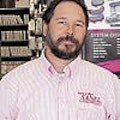Impending action (or inaction, depending on your point of view) on Right to Repair legislation has received a lot of attention over the last year. Every trade and technical journal that I’ve read lately has weighed in on the subject.
I read the articles and have followed a few online discussions debating the pros and cons of the proposed legislation, but I hadn’t really formed any opinions of my own until recently. The truth is that most of the cars that I deal with aren’t new enough for it to be an issue. Not yet anyway.
Boiled down to basics, the Right to Repair debate revolves around what the automakers describe as intellectual property; specifically, how much and how freely the OEMs should share it with aftermarket parts and service suppliers. Most of the arguments against legislation seem to come from the service side of the industry. The general feeling is that it’s not necessary, and any attempt to force the OEMs into compliance will have negative effects on the relations they have built with dealerships.
On the parts side, things are a little different. On hard parts, such as a ball joint, anyone can purchase an OEM unit, replicate the dimensions and start producing their own copy of it. The issues of quality and cost/benefit on these aftermarket parts will work themselves out in the marketplace.
Microprocessor-controlled electronics are another matter, however. A great deal more research and engineering is required, and this can drive prices up to the point of making them uncompetitive with OEMs, especially when you consider the rate at which production changes and optional parts listings occur. Trying to stay ahead of the curve on this could be a costly and unproductive nightmare for whatever amount of time the OEMs decided that they want to keep these vehicles in their own service bays.
The question then becomes: how long do they want to keep them in their own service bays? If their goal is to service that vehicle from assembly line to scrapyard it will never happen. Even if they had the capacity to do so it’s hard to imagine a factory-trained flat-rate technician working on a 15-year-old rust bucket, or that the owner of such a vehicle would be willing to pay for it. Even if they had a lock on the service end, I’m not sure they’d want to carry the parts inventory that it would entail. Most dealerships are probably more than willing to let a vehicle like this go, but would the manufacturer then be willing to freely share needed information?
In reality, most vehicles become the sole property of the aftermarket after five to seven years of “life.” At that point, the vehicle is probably paid for, out of warranty, ready for a major repair and may be on its second or third owner. Imagine that owner’s surprise when he or she finds out that service as simple as a battery change requires a dealership to reset the security codes so the vehicle will run.
Whatever the federal government does or doesn’t do at this point, I think, will have less of an impact than a lot of people believe. Real action will come when these vehicles reach the hands of the average DIYer or cut-rate repair shop. The key to retaining customers in the parts business is by making yourself convenient and economical to deal with; the new car industry is no different. And it’s not very convenient to be forced into having your vehicle serviced by someone not of your choosing.
About the Author
